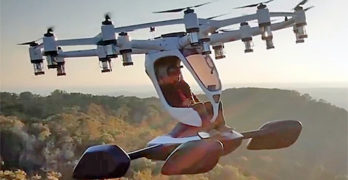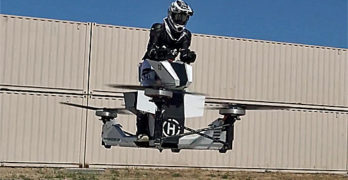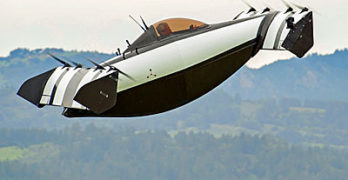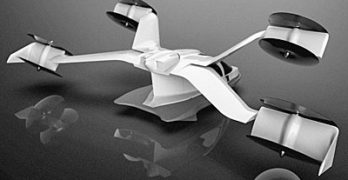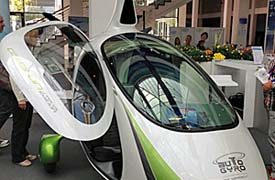Throughout the 115 years since the Wrights took their Flyer into the skies for the first time, aviation has enjoyed remarkable progress. Wing design, engine design, instrumentation changes, safety enhancements… we have witnessed many dramatic changes in how aircraft ply the skies and do so with increasing efficiency and with less danger to occupants or those on the ground.
All of us who enjoy flight know much about this, but things are changing and perhaps fast enough to push many of us current-aviation experts into a discomfort zone.
As you have seen on this website and just about any media outlet reporting on new developments, multicopters are looming ever larger on the horizon. More and more startups — many funded with tens or even hundreds of millions of dollars! — are jumping into the game. Huge aviation names such as Boeing and Airbus are deep into work on new-style flying machines.
Search Results for : multicopters
Not finding exactly what you expected? Try our advanced search option.
Select a manufacturer to go straight to all our content about that manufacturer.
Select an aircraft model to go straight to all our content about that model.
Flying Motorcycle Scorpion Earns “Approval” from FAA
So far, at least three entries* in the multicopter sweepstakes qualify themselves as Part 103 ultralight vehicles. I’m guessing that lead FAA rule writer, Mike Sacrey, never envisioned this idea back in 1982 when he and his team created aviation’s least-regulated aviation sector. In those days, FAA had only recently moved away from requiring that such aircraft demonstrate foot launching.
Mike would have needed a genuine crystal ball to foresee something like Scorpion 36 years ago. Let’s briefly put this in perspective — most readers had yet to buy their first computer; we were still 13 years away from the World Wide Web; it was a quarter century before the iPhone; even Light-Sport Aircraft were 22 years in the future.
Had Mike written a regulation back then to include multicopters like Scorpion he would surely have been relocated to some remote post where his craziness would not be obvious.
Infotech Meets (Part 103) Ultralight Aircraft. Big Deal! Or, So What?
This article again delves into the changing face of aviation and in this case within the Part 103 Ultralight Vehicle sector.
Infotech in Part 103 ultralight vehicles means far more than GPS or even synthetic vision digital screens (imagine an iPad mated to a Levil box … remarkable stuff and for very little money). However, digital avionics are not the point of this story.
In the last few days, a formerly Canadian company, Opener, announced their new eVTOL (electric vertical takeoff and landing), the second developer I know of to adopt Part 103’s simplicity and freedom. Like Kitty Hawk’s Flyer*, the rather unusually-named BlackFly also calls itself an “ultralight,” more precisely meaning an ultralight vehicle that can operate under Part 103. What you might like about this, compared to more than a dozen “air taxi” designs, is that BlackFly appears aimed at recreational flyers (as does Flyer).
Weird? Or, Wonderful? More Companies Move Toward eVTOL …Will Sport Pilots?
What on Earth is going on in Airplane DesignerLand? Are we headed for a bifurcation, a parting of the ways among those engineering the next generation of aircraft? Perhaps. Will this affect you? How do you feel about non-fixed-wing aircraft?
I am searching for a term to generically describe these emerging flying machines; “drones” doesn’t quite do the job. More of these seemingly-weird-looking machines seem to pop up every day.
Prior experience suggests that most will never make it to market. Ones that do succeed in the eVTOL or electric-powered aircraft market may not even exist today. For that matter, it is far from certain that this will ever turn into a market, though given the huge amounts of money pouring into research projects, it seems nearly inevitable (to me) that some will survive and perhaps have a major impact on flying, both for transportation and for sport or recreation.
Along this vein, before and at Sun ‘n Fun 2018, I spoke to officials from BRS parachutes.
Aero 2014 Review … Starting to Think AirVenture
Life has settled down a little after the rush that began at the end of March. Five weeks back, Sun ‘n Fun was approaching to kick off the season of recreational flying.
Aero in Germany followed with only a one day break before boarding the airliner to Europe followed by plenty of follow-up and contemplating the hot and fast action. With a couple weeks of perspective and to answer a common question — How does the industry look in Europe? — I have some final observations.
I found five areas to consider and list them below. Among all the many wonderful aircraft I saw, two particular subgroups stood out for me personally, one for its sheer success and the other for its subtle return to a higher interest plateau.
I refer first to gyroplanes and secondly to, well … what to call them? How about simply “ultralights?” Even that word isn’t right because Ultralight in Europe means something quite different from ultralight (vehicle) in the USA.


